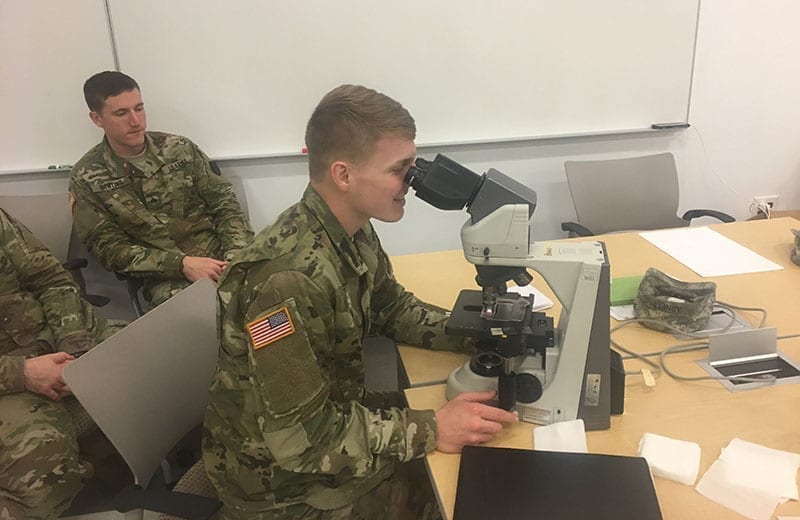The 1st Area Medical Laboratory (1st AML) recently hosted a three-day course in Operational Clinical Infectious Disease (OCID).
As the U.S. Army’s only deployable lab, personnel from the 1st AML are trained in surveillance, confirmatory analytical laboratory testing and health hazard assessments of environmental, occupational, endemic and CBRNE threats in support of force protection and counter-weapons of mass destruction missions.
The OCID course was conducted with the support of instructors from Walter Reed Army Institute of Research (WRAIR) and the U.S. Army Medical Research Institute of Infectious Diseases (USAMRIID) at the Mallette Training Facility in Aberdeen Proving Ground, Maryland from 10-12 Jan.
Topics covered included Preparing the Traveler, Managing the Returning Traveler, HIV in the Military, Basics of Microscopy, Tropical Dermatology and many others. They also had lectures on how to identify dengue, malaria, and other diseases.
According to Col. (Dr.) Arthur Lyons the director of executive medicine for the Office of the Surgeon General and OCID primary instructor, the main reason to give this course is to create awareness and familiarize folks with what to look for when they deploy to tropical regions.
Lyons also specified the course is not only for laboratory and medical staff, but for supporting staff as well.
“For somebody that doesn’t do lab work, I took a lot from this class,” said Sgt. Natasha Sims, a food inspector for the 1st AML. “It’s nice to visualize what my unit talks about all the time.”
Sims went on saying “I like the fact they broke everything down as far as where you can get these viruses and illnesses from, how do you get them, how to treat them and how they look like. I really appreciated that they made it easy to recognize for those who don’t do it every day.”
Participants were given the opportunity to voluntarily perform their own HIV test and observe their blood under the microscope.
“That was the most fun for me,” said Sims when asked about the hands-on part of the course. “We were able to draw our own blood. It was really cool.”
The course can be designed to meet the needs and requirements of the host unit. For example, if the group is going to Africa the course will emphasizes on threats endemic to that area such as malaria.
Article adapted from original by Angel D. Martinez, 20th CBRNE Command, edited for context and format by Global Biodefense.


